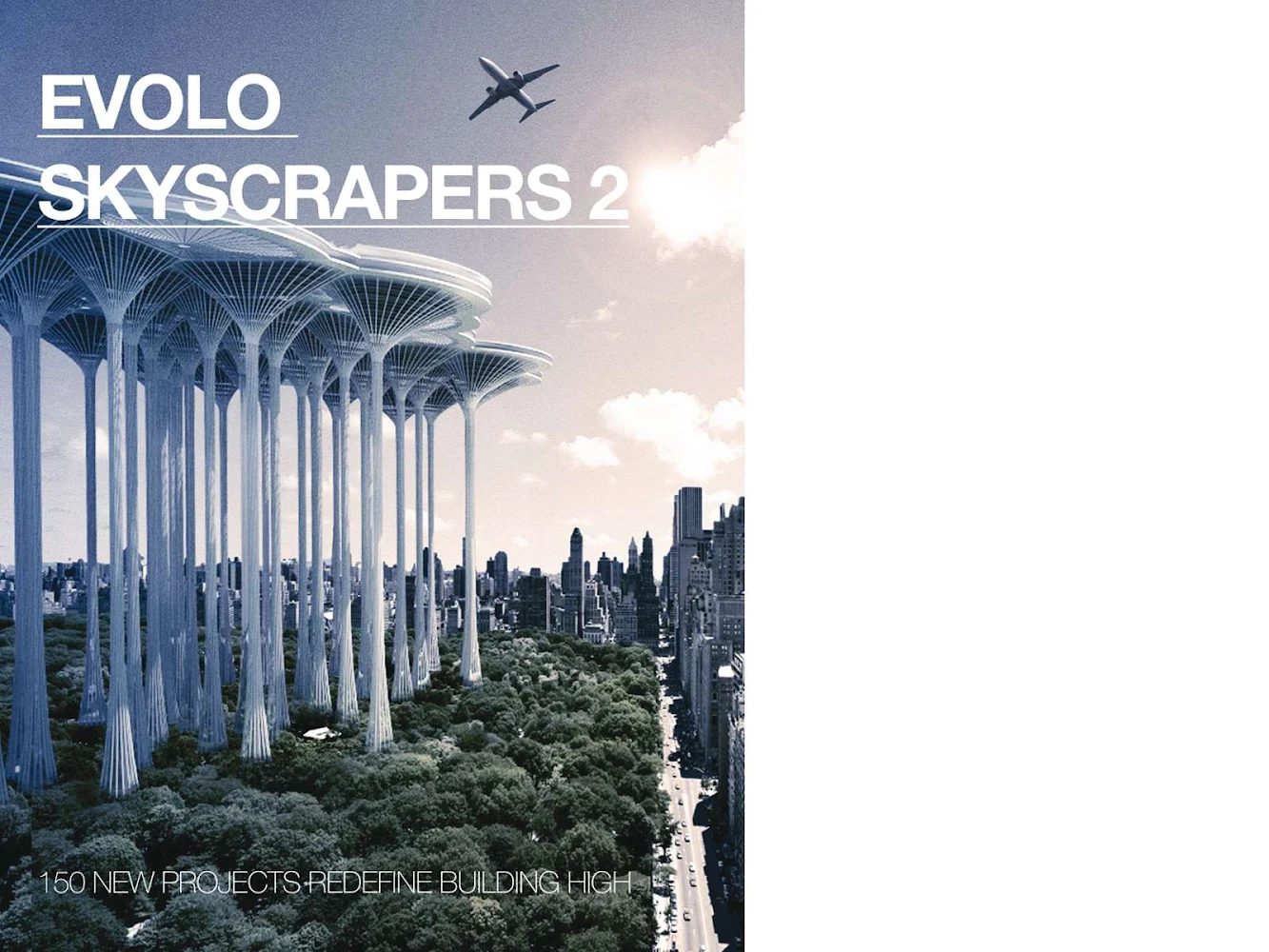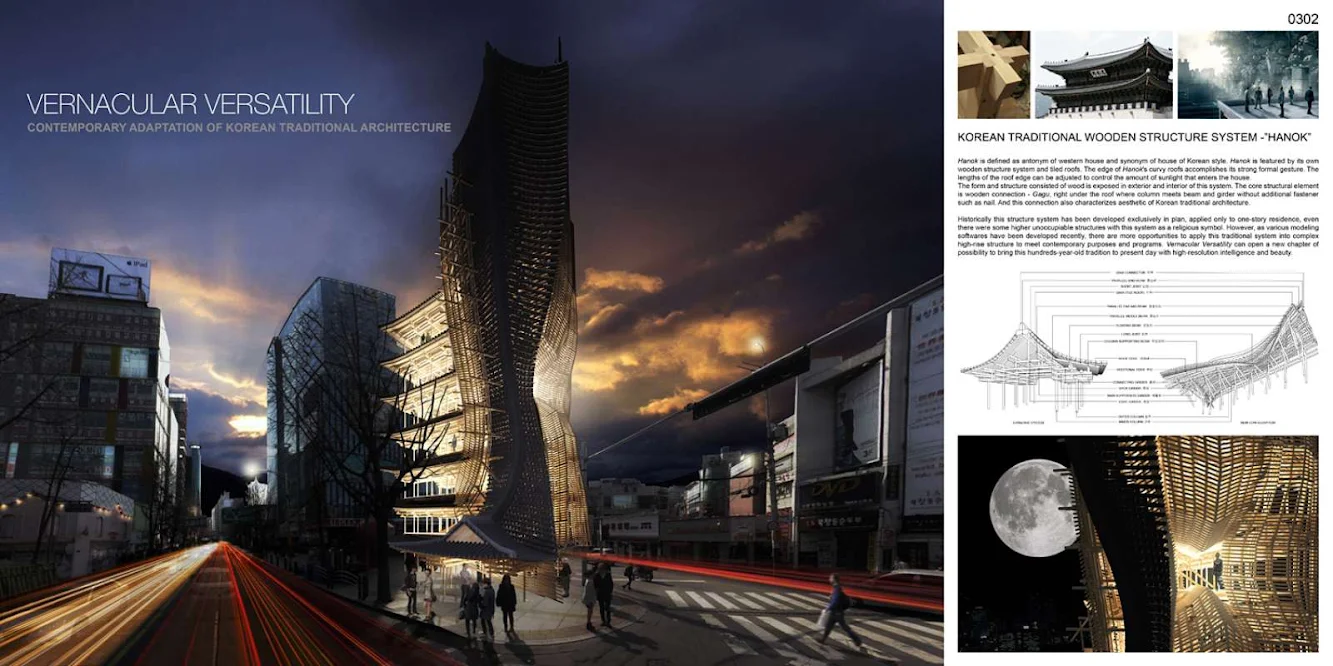
The winners for the 9th annual eVolo Skyscraper Competition were announced,
with the participation of 525 entries from 43 countries in all continents.
1st place: "Vernacular Versatility" by Yong Ju Lee - U.S.

Hanok is the named used to describe a traditional Korean house. A Hanok is defined by its exposed wooden structural system and tiled roof. The curved edge of the roof can be adjusted to control the amount of sunlight entering the house while the core structural element is a wooden connection named Gagu.

The Gagu is located below the main roof system where the column meets the beam and girder and it is fastened without the need of any additional parts such as nails – this connection is one of the main aesthetic characteristics of traditional Korean architecture. Historically this structural system has been developed exclusively in plan, applied only to one-story residences.

However, as various modeling software have been recently developed, there are more opportunities to apply this traditional system into complex high-rise structures that meet contemporary purposes and programs. Vernacular Versatility can open a new chapter of possibilities to bring this old construction and design tradition to the present day with efficiency and beauty.
2nd place: "Car and Shell: or Marinetti’s Monster" by Mark Talbot and Daniel Markiewicz - U.S.

This project proposes a city in the sky for Detroit, MI. The new city is conceived as a vertical suburban neighborhood equipped with recreational and commercial areas where three main grids (streets, pedestrian pathways, and structure) are intertwined to create a box-shaped wireframe.

Traditional and contemporary houses and other diverse programs plug in the structure to create a rich vertical urban fabric. Or mission is clear: rescue Detroit from being rescued. In a world whose only acceptable path is the immediate betterment of our own existence, my partner and I demand the discipline to let it die and live another day.

Sweating and panting with the knowledge that our current society’s insatiable and nearsighted appetite for growth, innovation and development is strangling the whispers of life out of the very future it hopes to serve, my partner and I can no longer stand idly by and watch our cities consume themselves with an anxious need for expansion. Our society has been poisoned by the belief that a city in decline is a city in need of resurrection.
3rd place: "Propagate Skyscraper" by YuHao Liu and Rui Wu – Canada

Carbon capture is an emerging practice aimed at obtaining and containing greenhouse gases to mitigate their net availability in the atmosphere. However, existing carbon capture practices use the method of point capture, catching carbon gases at the source, requiring a significant initial investment in additional facilities, infrastructure, and maintenance of underground storage.

Current research on carbon gases suggests alternative method of capture, such as air capture through carbon-philic resins and material processes that transform carbon dioxide into solid construction material. Taking this one step further, we hypothesized a material capable of assimilating carbon dioxide as a means to self-propagate. Employing such a material allows air capture of carbon dioxide and the resultant production of a solid construction material capable of supporting load.

Channeling its properties, we propose a skyscraper that grows. By constructing a simple vertical grid scaffold as a framework, we are given control to the extent and underlying structure of the skyscraper. Unlike conventional skyscrapers, which rely on steel frame and concrete casting, the proposed skyscraper suggests a more environmental conscious construction method, an alternative mode of occupation and ownership, and possibly a distinct organization of social relationships.